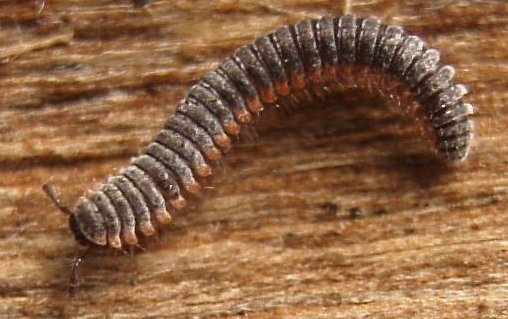Key to Australian Freshwater and Terrestrial Invertebrates
Phylum Arthropoda
Subphylum Myriapoda
Class Diplopoda
Order Chordeumatida
Common name: chordeumatid millipedes
Overview
Members of the order Chordeumatida are small to medium-sized millipedes, generally under 2 cm in length, with 26 to 32 segments. They are relatively soft and may be cylindrical, subcylindrical or with lateral projections called paranota giving them a flat-backed appearance. The body is tapered towards the end. Chordeumatid millipedes are usually rather long-legged, are surface runners, and are quite agile for millipedes. The have prominent eyes and differ from other millipedes by the presence of six long, dorsal setae mounted on large tubercles on each body segment.
Distribution and Diversity
The highly diverse order Chordeumatida is currently grouped into more than 30 families, most of which are restricted to the Northern Hemisphere. They occur worldwide, except for tropical South America and sub-Saharan Africa (but are present on Madagascar). Some families and genera display a Gondwanic distribution and many species have distributions that mark them as relicts. There are currently 1237 described species with 22 species known from Australia
Life cycle
Chordeumatida millipedes have separate sexes. Male and female clasp each other during mating, and the male uses his modified legs, called gonopods, to transfer spermatophore to the female. Females lay eggs in soil leaf litter, often building a protective nest. The young millipedes hatch with only three pairs of legs. Although small and colourless, they resemble adults in shape, and grow gradually through a series of moults, adding more segments and legs with each moult.
Feeding
Chordeumatida millipedes are detritivores and fungivores, feeding on decaying vegetation, dead wood, and similar materials.
Ecology
Chordeumatids can be abundant in wet temperate and montane forests. Some species are restricted to subterranean habitats, such as caves and rock crevices. They are usually collected by the Berlese extraction method from leaf litter, and there are hundreds of unsorted specimens in Australian museums. With few exceptions, they are ill-adapted to warm, dry conditions and these species have restricted distributions.







